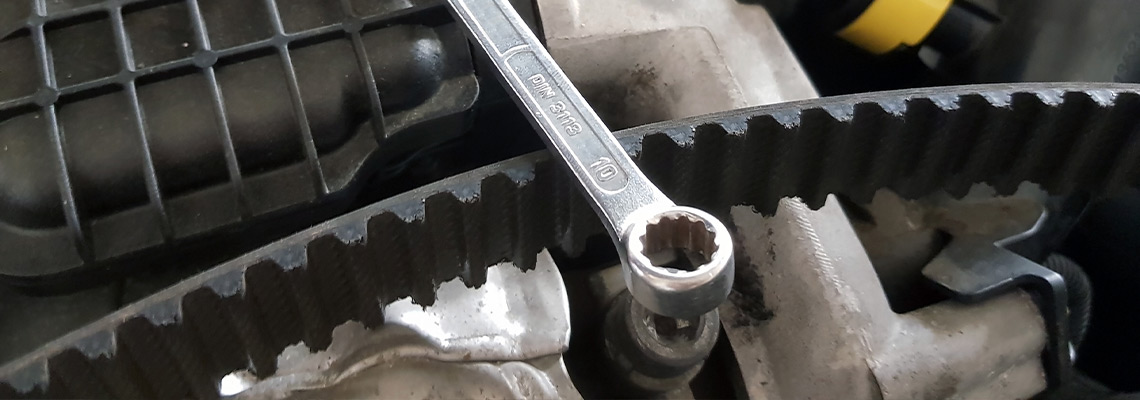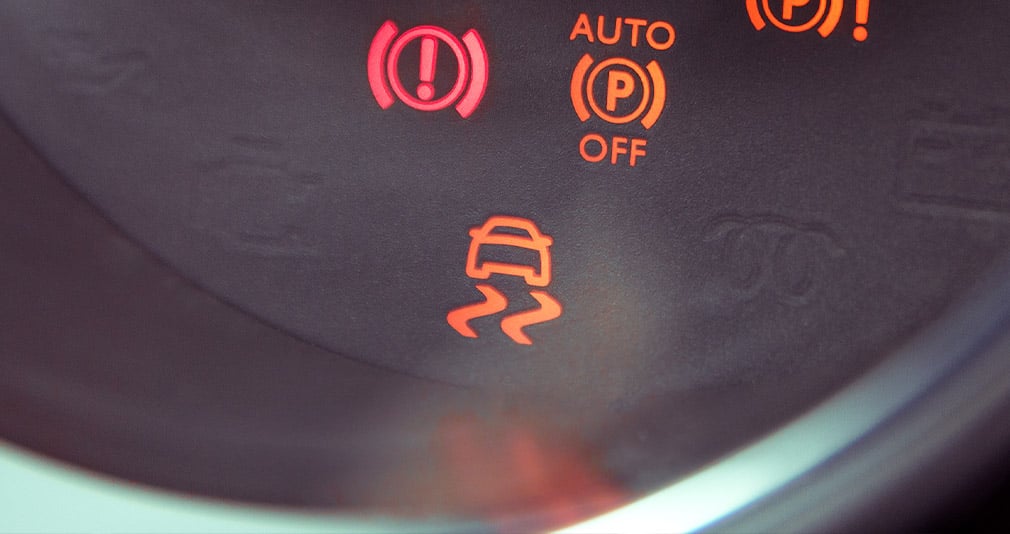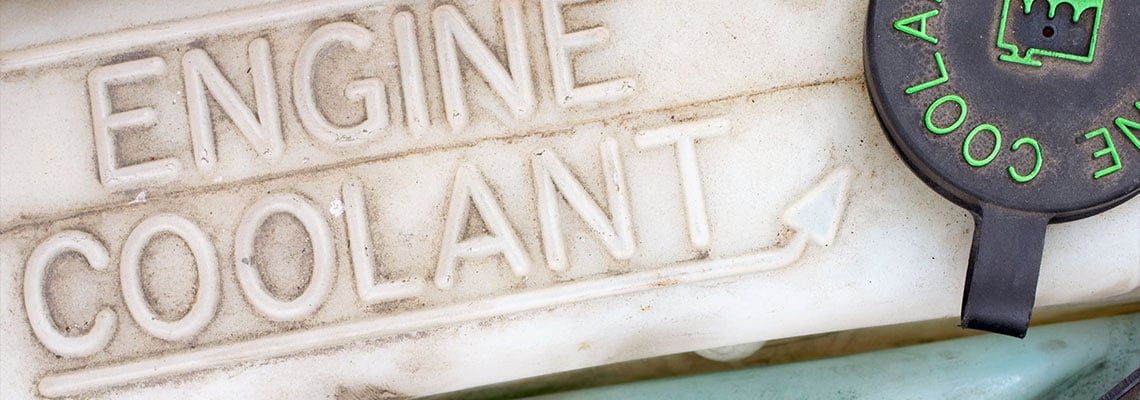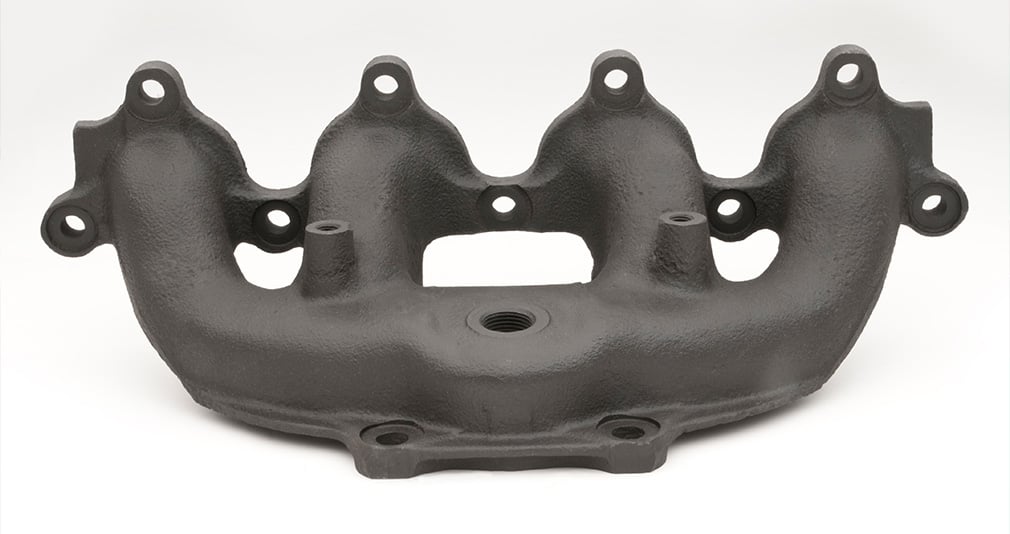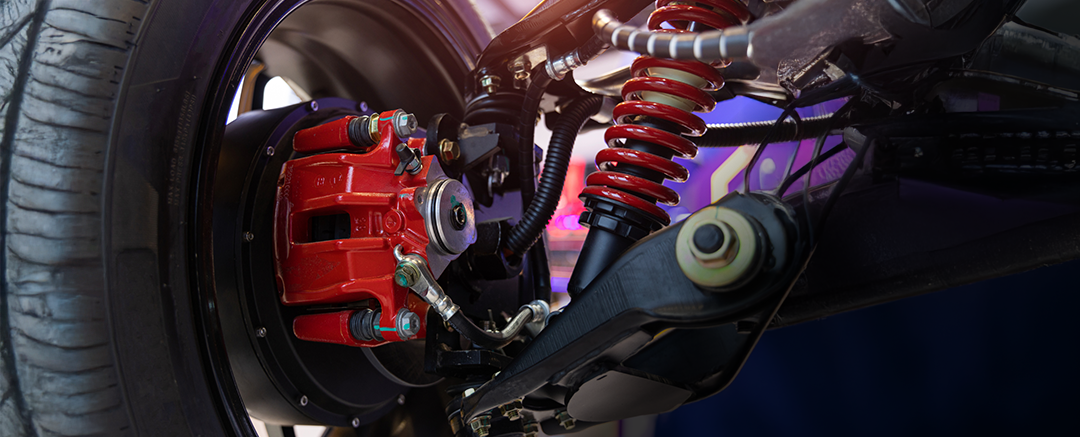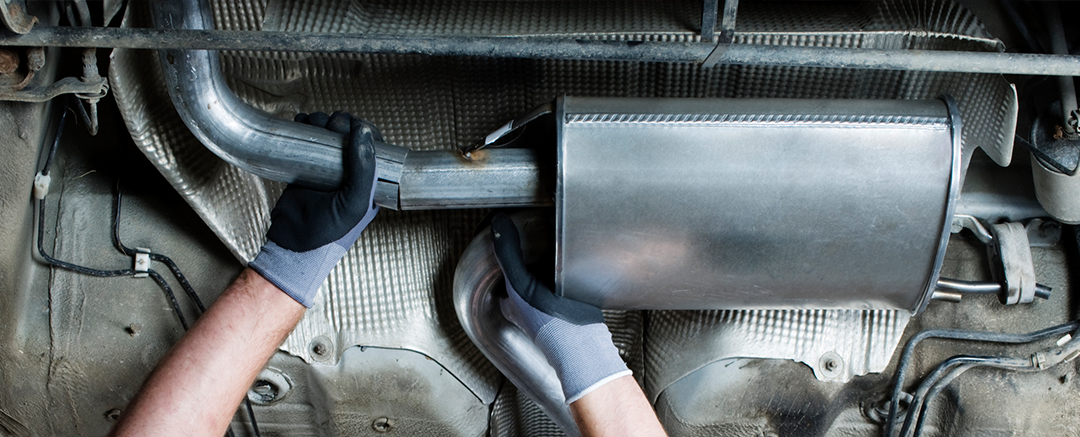A broken timing belt can spell trouble for your car (and also for your budget), so it’s important to know the warning signs that a timing belt is wearing out. But it’s also critical to understand what it does and how it affects your vehicle’s performance.
One of the things that makes it difficult to check on timing belts is that they’re sealed in their own cover, which helps protect them from the oil and dirt circulating around an engine. They need to be protected because they're one of the most important elements under the hood; your car can’t run without them and a broken belt can cause severe damage to the engine.
Most timing belts are made out of rubber but also are reinforced with nylon cords to give them extra strength. This allows them to do the hard work required to rotate the cam and crankshaft so that all the engine’s cylinders fire at exactly the right time. Your engine relies on the pistons and valves to sync up perfectly and, if they don’t, your engine won’t run smoothly. In extreme cases, it won’t run at all.
While most older cars have a timing belt, many manufacturers have switched to using metal timing chains in newer vehicles. The chain serves the same purpose as the belt but is made of metal instead of rubber, which makes it last longer. (The downside of that is that when a timing chain breaks, because it's made out of metal, it can cause greater damage to the engine.)
You can check your owner’s manual to see whether your car has a timing belt or a timing chain. If you don’t find a maintenance schedule for the timing belt, the chances are good that your car has a timing chain. If you don’t have an owner’s manual, do an online search of your car’s make, model and year to find out which one is under your hood.
If you have a timing belt, it’s a good idea to learn more about what warning signs to look for, when to take it in to see a professional and what to do if it breaks.
Why Do Timing Belts Fail?
A timing belt will usually fail for one of two reasons: age-related wear or because of failure in the water pump.
Over time, as your car is driven, the friction of the engine will wear down the rubber “teeth” on the belt, making it harder for them to get a grip on the gears. When this happens, the belt may slip and could cause damage to the engine.
Like any other rubber, a timing belt can also begin to get brittle and crack, which puts it at greater risk for snapping.
Since the timing belt runs through the water pump, it is vulnerable if anything goes wrong with the pump. That’s one reason preventive maintenance of your cooling system is so important. Ignoring routine maintenance procedures like coolant flushes and checkups could lead to problems with the water pump that also damage or break the timing belt. These checkups will let you know if there’s a problem that could cause a water pump seizure or other issues.
What Are the Warning Signs of Timing Belt Failure?
Because timing belts are difficult to reach and inspect, it’s a good idea to know some of the indicators that a timing belt might be having problems. Here are four common warning signs:
1. An Engine That Runs Rough
Because the engine’s timing is directly connected to the timing belt, it’s not uncommon for an engine to misfire when the belt is going bad. An engine might also have unpredictable performance if the belt is worn or loose, and that could mean the belt is slipping and making the cylinders open and close at the wrong time.
2. Your Vehicle Won’t Start
Of course, there are many different reasons that your car won’t start, but it definitely will not start if the timing belt is broken. If it’s a timing belt issue, the car won’t respond at all, and it’s important not to keep trying so you’ll avoid any damage to the crankshaft bearings, cylinder heads and water pump.
3. Clicking Noises in the Engine
When a ticking or clicking sound comes from under your hood, you have a problem. It could be from having low oil pressure, which affects the timing belt, or it might be a problem in the cams or crankshaft. Regardless, it’s something to have your mechanic look at immediately.
4. Squealing Noises from Your Car
If you hear a squealing sound when you’re accelerating, braking or just idling, the timing belt might be to blame. There are other reasons that a car might make a squealing sound, but it’s not something to take a “wait and see” attitude about. Have it checked out for peace of mind as well as for your own well-being.
How Often Do Timing Belts Need Replaced?
Perhaps the most important thing to remember about timing belts is that you can’t put them off for too long once you begin seeing signs of trouble. And, if you’re nearing the mileage at which your vehicle manufacturer recommends you have it replaced, you could be saving yourself money and headaches by getting it fixed before it breaks.
There’s no single answer for how long a timing belt is expected to last. Different manufacturers have different recommendations for when a timing belt should be replaced. This can range from 50,000 to 100,000 miles, depending on the vehicle, so with that kind of range in recommendations, it’s a good idea to know what is suggested for your car.
It can be difficult to tell if your timing belt is worn, so this determination should always be left to someone who knows how to properly inspect it. Making sure that you’re maintaining your car properly will extend the life of your vehicle and allow your mechanic to watch for problems that can be fixed before they turn into major headaches.

